The Traditional Dish of Greece
Mousaka is a traditional Greek dish that has been enjoyed by locals and tourists alike for many years. This hearty and flavourful casserole is made up of layers of eggplant, ground beef or lamb, and tomato sauce, with a creamy béchamel sauce topping. It is often served as a main course, accompanied by a fresh Greek salad and a glass of red wine.
How to Prepare Mousaka
To prepare mousaka, the eggplant is first sliced and then fried until golden brown. This not only gives the eggplant a delicious flavour, but it also helps to remove any excess moisture. The ground beef or lamb is then browned, along with onions, garlic, and spices such as cinnamon and oregano. The tomato sauce is then added, and the mixture is simmered until the flavours are well combined.
Once the meat mixture is ready, it is layered with the fried eggplant slices in a baking dish. The final layer is a rich and creamy béchamel sauce, made from butter, flour, milk, and eggs. This topping gives the mousaka a smooth and velvety texture, and it is often sprinkled with grated cheese before being baked in the oven until golden brown and bubbly.
Moussaka: A Dish with History and Tradition
Mousaka is a dish that is steeped in history and tradition. It is believed to have originated in the Middle East and was brought to Greece during the Ottoman Empire. Over time, the recipe has evolved to
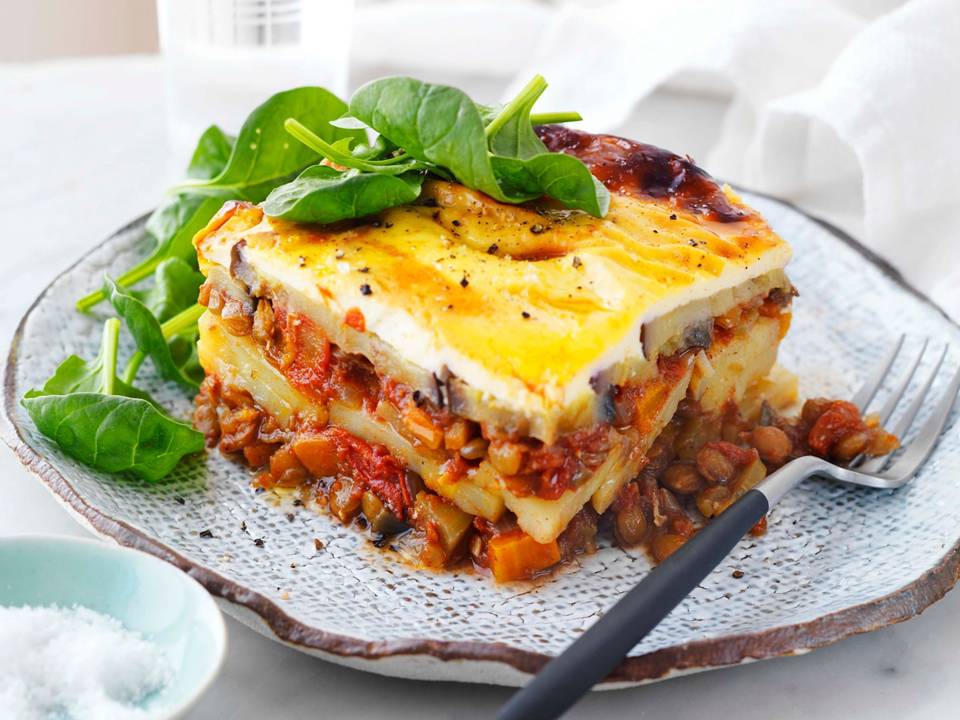
include more Mediterranean flavours, such as tomatoes and herbs.
Today, mousaka is a staple of Greek cuisine and can be found on the menu of almost every Greek restaurant. It is a dish that is loved by locals and tourists alike, and is often served at family gatherings and special occasions.
A Hearty And Filling Dish
One of the reasons why mousaka is so popular is because it is a hearty and filling dish that is perfect for colder weather. The layers of eggplant and meat provide a rich and satisfying flavour, while the béchamel sauce adds a touch of creaminess and indulgence.
Mousaka Can be Made With Meat or Without
Another reason why mousaka is so loved is because it is a versatile dish that can be adapted to suit different tastes and dietary requirements. For example, vegetarians can make a meat-free version of mousaka by using lentils or chickpeas instead of ground
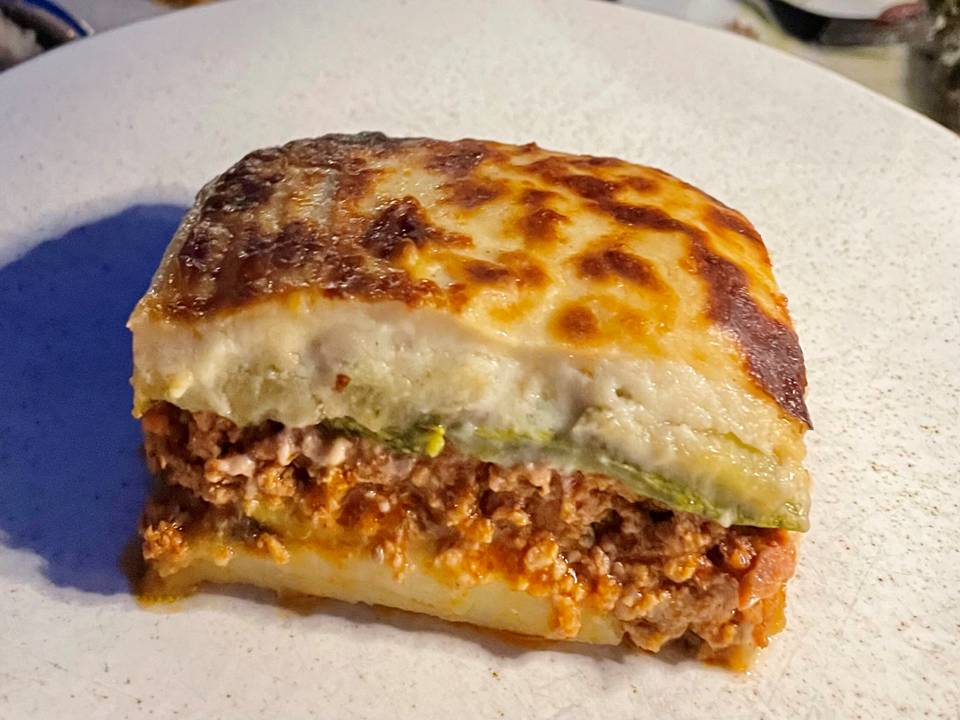
beef or lamb. Similarly, those who are lactose intolerant can use a dairy-free béchamel sauce made with almond milk or soy milk.
Conclusion
In conclusion, mousaka is a delicious and traditional Greek dish that has stood the test of time. Its rich and hearty flavours, combined with its versatility and adaptability, make it a favorite among locals and visitors alike. Whether enjoyed at a fancy dinner party or a casual family gathering, mousaka is a dish that is sure to satisfy any appetite.
How to Make Mousaka
Ingredients
6 tbsp olive oil
3 medium aubergines cut into 5mm rounds
800g lamb mince
1 onion, finely chopped
2 fat garlic cloves, crushed
3 heaped tsp dried oregano
2 tsp ground cinnamon
2 bay leaves
200ml red wine
400g can chopped tomatoes
2 tbsp tomato purée
½ tbsp light brown soft sugar
550g Maris Piper potatoes, peeled and sliced into 5mm rounds
For the béchamel sauce
40g unsalted butter
40g plain flour
450ml whole milk
40g parmesan, finely grated
whole nutmeg, for grating
1 large egg plus 1 yolk, lightly beaten
Method
- Heat a frying pan over a high heat. Drizzle 4 tbsp of the oil over the slices of aubergine and fry them in several batches for 5-7 mins or until golden brown and beginning to soften. If they look a little dry during cooking, add a dash more olive oil. Set aside on a plate lined with kitchen paper.
- Heat 1 tbsp of the oil in a large flameproof casserole dish or saucepan over a medium-high heat. Add the mince and fry for 8-10 mins until a deep golden brown, regularly stirring and breaking up with a wooden spoon. Tip into a bowl and set aside. Add the remaining oil to the casserole. Tip in the onion along with a pinch of salt and fry gently for 10-12 mins or until softened and turning translucent. Add the garlic, oregano, cinnamon, chilli and bay cooking for a further min. Return the lamb to the pan and pour in the red wine, bring to a bubble and reduce the wine by half. Stir through the tomatoes, tomato purée and brown sugar, along with 200ml water. Season. Lower the heat and simmer gently, uncovered, for 20 mins, stirring occasionally until the sauce has thickened.
- Heat oven to 200C/180 fan/gas 4. Bring a large pan of lightly salted water to the boil. Add the potato slices and cook for 6 mins, drain in a colander and leave to steam dry for 10 mins.
- Melt the butter in a small saucepan, stir in the flour, and cook over medium heat for 1 min. Remove from the heat and whisk in the milk, pouring in a bit at a time, until smooth. Return to the heat and bring to a simmer, cooking for 3 mins. Remove from the heat and whisk through the parmesan, a little grated nutmeg and some seasoning, and finally the whole egg as well as the yolk.
- Take a large rectangular ovenproof dish. Spoon a third of the meat into the dish and spread out evenly, followed by half the aubergine and half the potato, then the rest of the meat and another layer of aubergines, followed by potatoes. Finish with the béchamel, smoothing the top over with a palette knife. Put in the centre of the oven and cook for 50 mins or until deep golden brown. If it browns too much during cooking, cover the dish. Set aside for 10 mins to cool before serving.
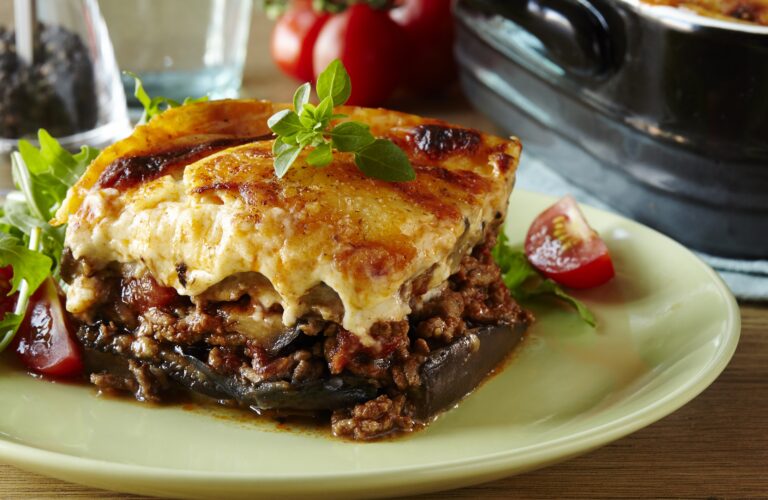
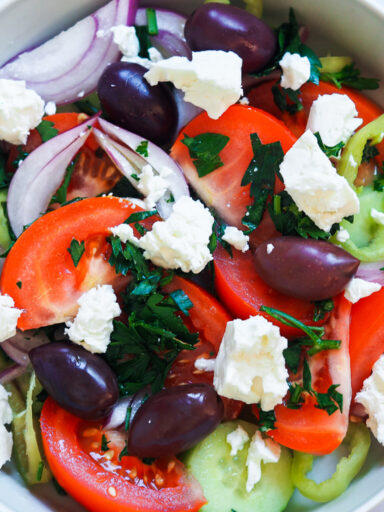
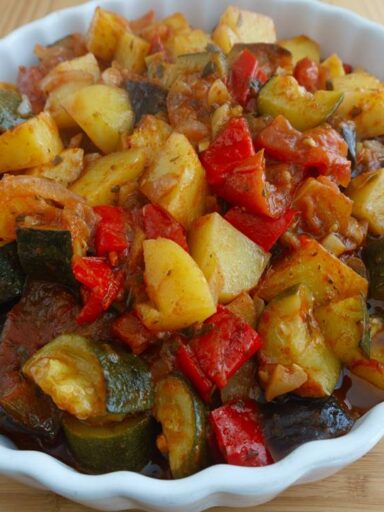

I like this web blog it’s a master piece! Glad I noticed this on google.?